Special Report
Countries Where People Don't Get Enough to Eat
Published:
Last Updated:
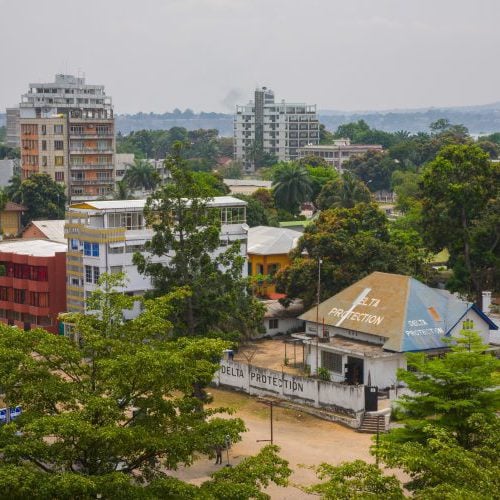
The study estimates that 17.7% of people in those countries are food insecure, accounting for a total of 646 million people.
Many of the most food insecure countries are in the throes of war. Whether it is a civil war like the one in Yemen or an ongoing international conflict like the U.S. war in Afghanistan, conflict can have truly detrimental effects on regional food production and supply.
There is reason for optimism in the fight against world hunger. The USDA projects that the share of food insecure people in those 76 countries will drop from 17.7% to 8.9% by 2027.
According to Karen Thome, co-author of the USDA’s International Food Security Assessment, two main factors are likely to improve upon the international food situation in the future. The first is consistently low international food prices. “In countries that are more integrated into the world market, they’re producing some of their own food, but they’re also importing things at relatively low prices so people can afford food.” Thome said. The other reason for optimism is rising income in many food-insecure markets. “This is especially the case in Southeast Asia… [also] India is having huge, huge income growth and for that reason people are going to be able to afford food.”
To find out the countries that are struggling the most with food insecurity, 24/7 Wall St. reviewed the U.S. Department of Agriculture’s International Food Security Assessment for 2017.
Click here to see the countries that don’t have enough to eat
Click here to read our detailed findings and methodology
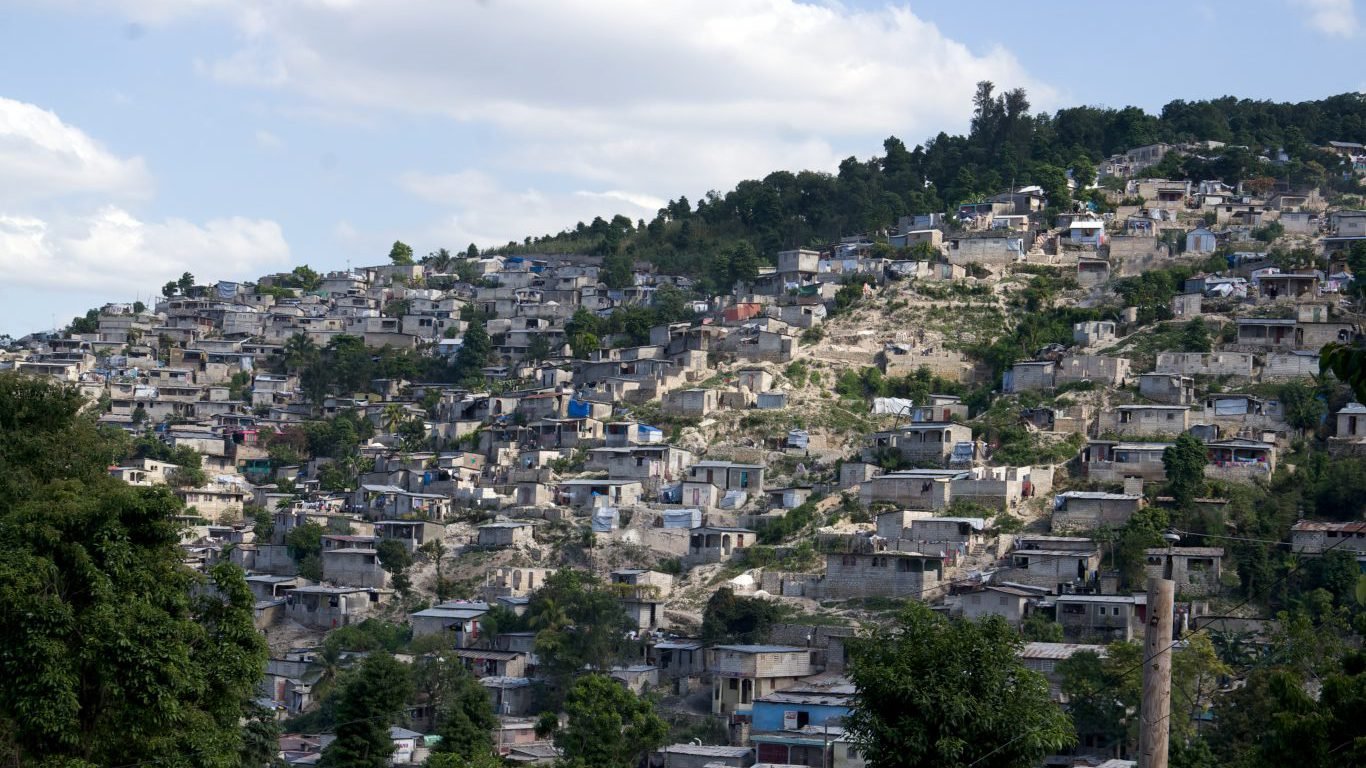
15. Haiti
> Pct. food insecure: 48.2%
> Projected food insecurity share for 2027: 31.2%
> Total population: 10.6 million
Haiti is the only country in the Latin America and the Caribbean region to be among the 15 most food insecure countries. More than 48% of Haiti’s population is unable to consume at least 2,100 calories per day.
Haiti has one of the largest food gaps in the world, at 639 calories per day. The food gap is the difference between the recommended 2,100 calories per day and the average number of calories consumed by the average person in the country.
[in-text-ad]
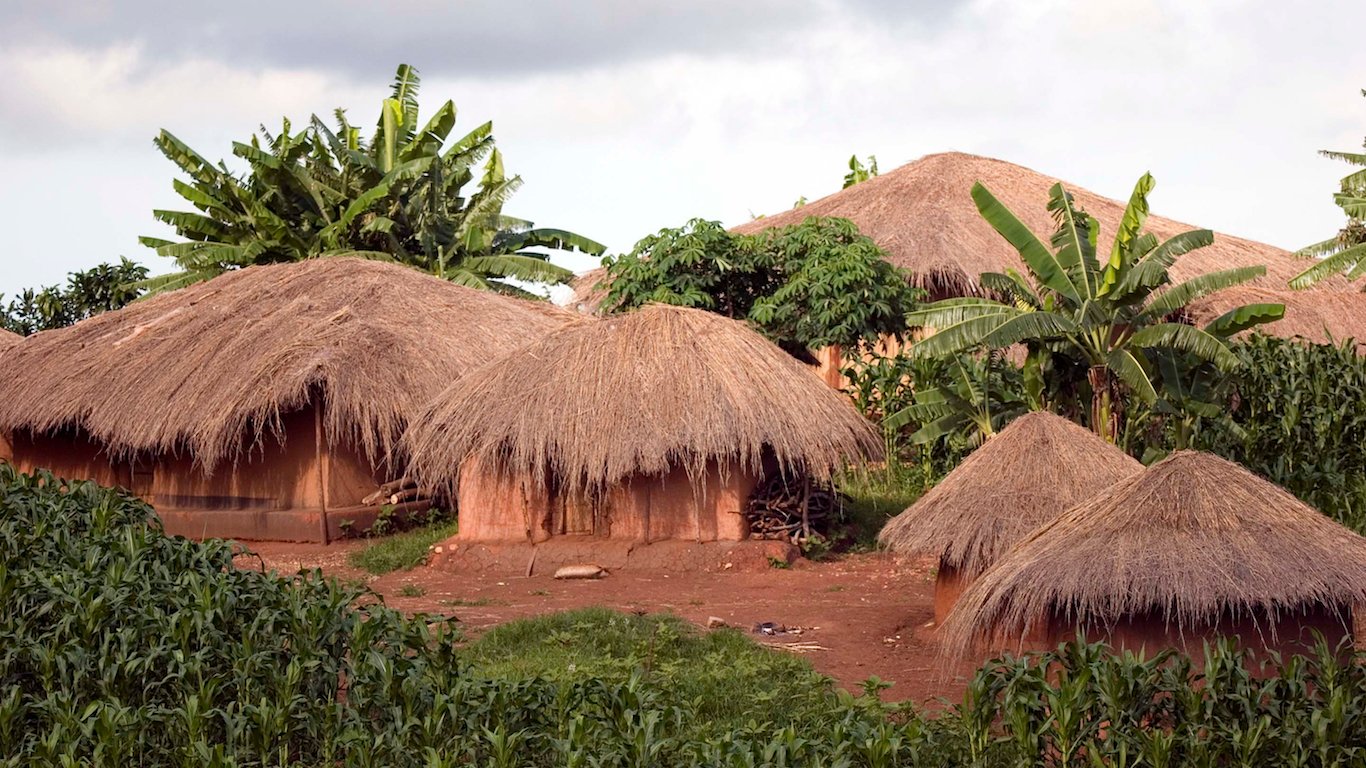
14. Malawi
> Pct. food insecure: 48.4%
> Projected food insecurity share for 2027: 34.8%
> Total population: 19.2 million
Malawi is one of the many Sub-Saharan African countries struggling with food insecurity. Although 48.4% of its population is food insecure, the country has reason for optimism. Its food insecurity rate is projected to drop by more than 13 percentage points by 2027.
Even though Malawi’s population is projected to grow by more than 7 million in the next decade, the USDA believes its total food insecure population will remain the same at 9.3 million people overall.
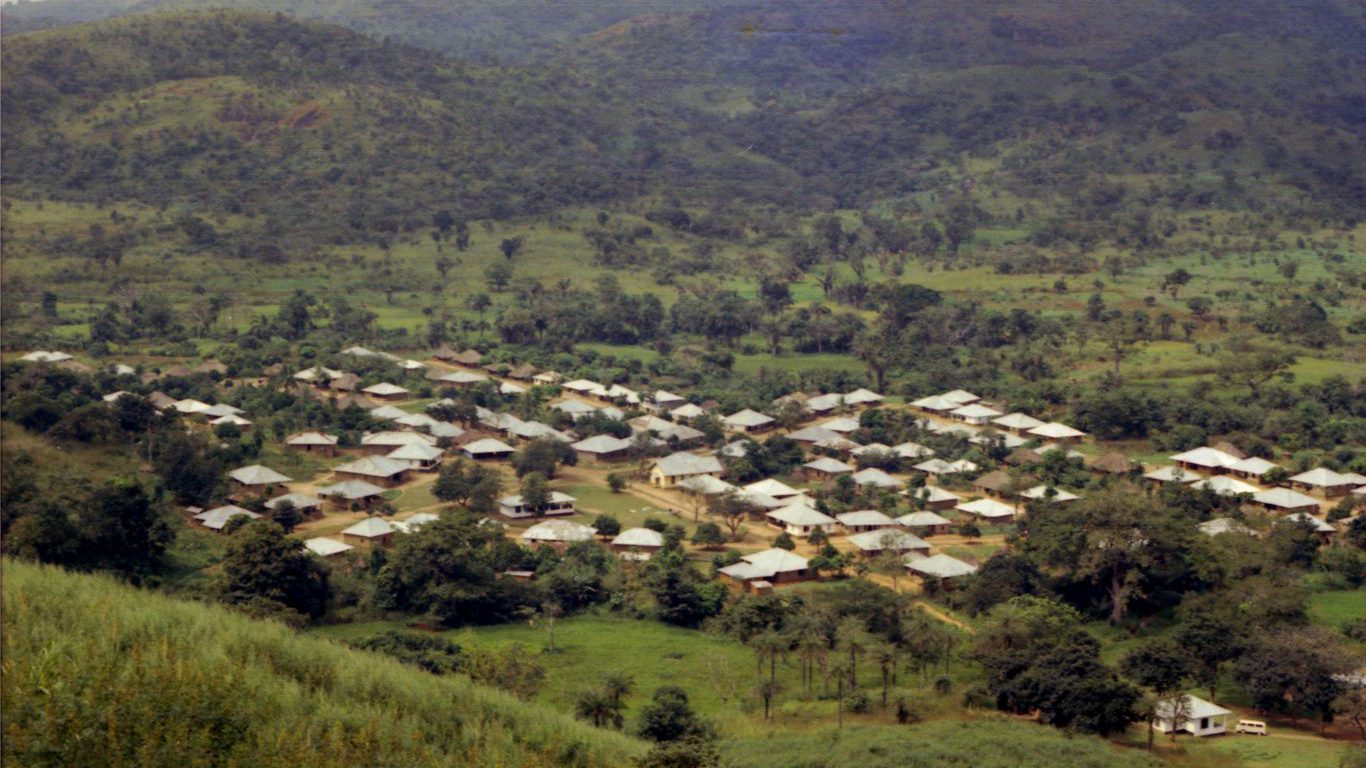
13. Sierra Leone
> Pct. food insecure: 48.8%
> Projected food insecurity share for 2027: 31.0%
> Total population: 6.2 million
One of the smallest countries on this list, Sierra Leone is projected to have one of the biggest food insecurity rate declines in 10 years — from 48.8% of the population to 31.0%. So despite projected population growth, there could actually be fewer people in Sierra Leone facing the possibility of hunger in 2027 than there were in 2017.
Though the country has struggled with food insecurity, its economy depends on food production. Among the 76 ranked countries, 54.0% of the country’s total GDP output is attributable to farming.
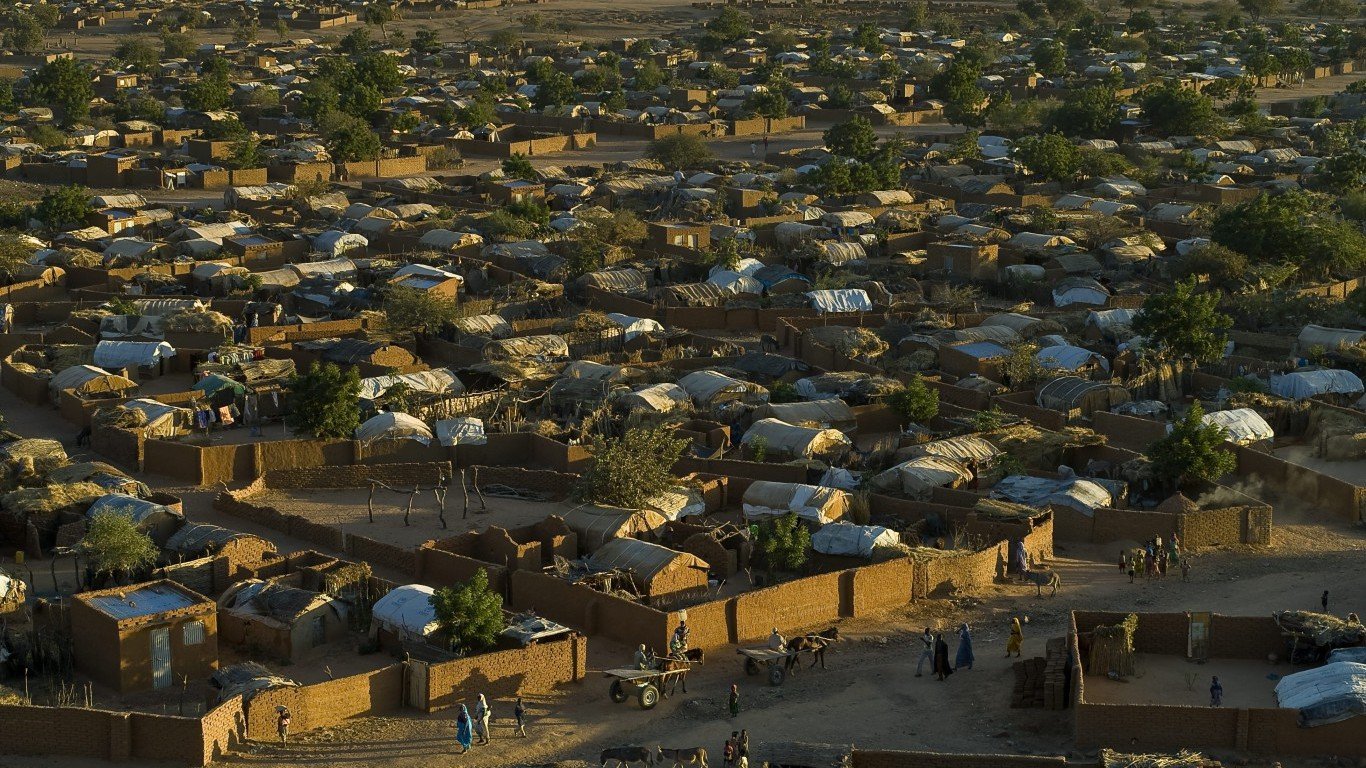
12. Chad
> Pct. food insecure: 49.2%
> Projected food insecurity share for 2027: 42.3%
> Total population: 12.1 million
Chad is one of many countries on this list that has been affected by recent wars – both with nearby countries and its own civil war. Conflicts can lead to widespread food deprivation as resources become scarce.
The country could have the means to feed more of its people since over half of Chad’s land is used for agricultural purposes. However, Chad’s rate of food insecurity is projected to drop less than one percentage point per year over the next decade.
[in-text-ad-2]
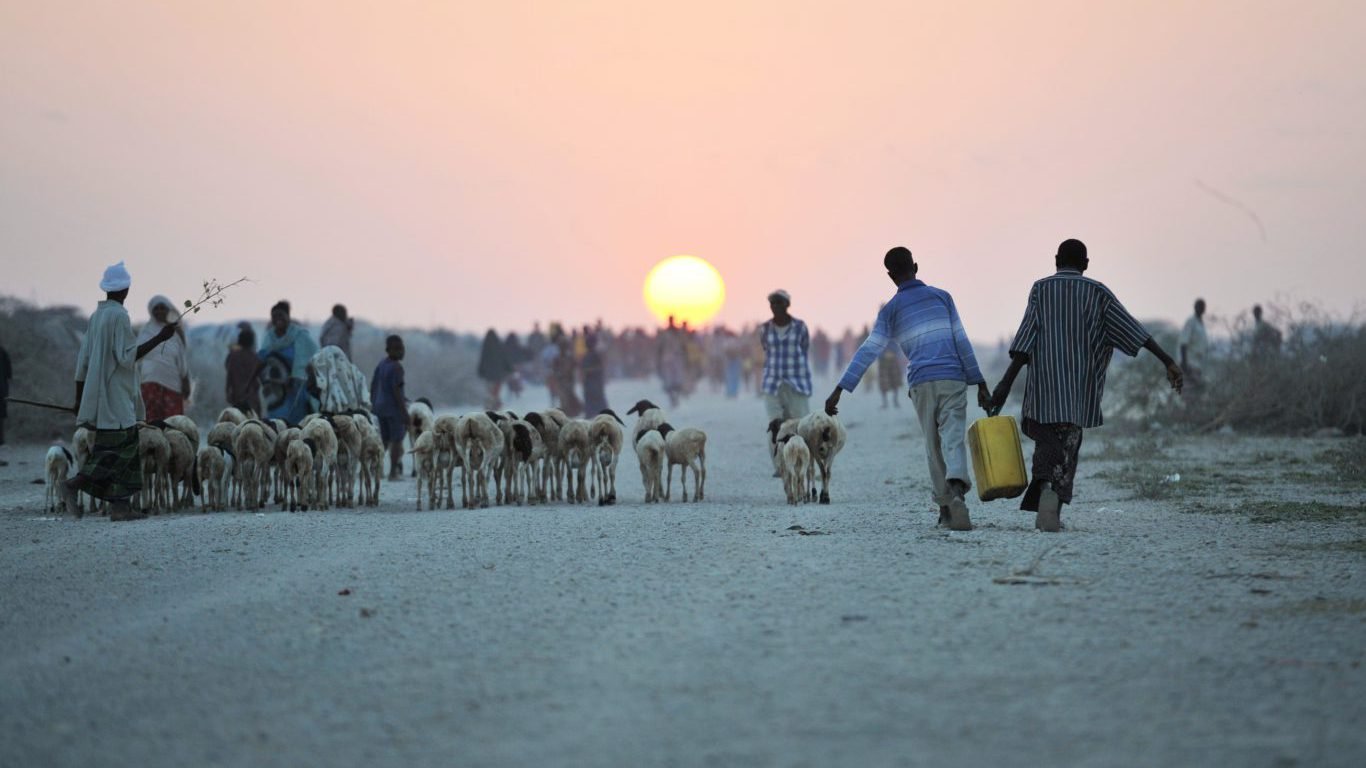
11. Somalia
> Pct. food insecure: 49.9%
> Projected food insecurity share for 2027: 29.0%
> Total population: 11.0 million
Somalia has been one of the most tumultuous places in the world for the past few decades. The country’s first formal parliament in years was installed in 2012, and the country went more than 40 years without a presidential election.
The chaos has made it difficult to find solid statistics about Somalia, but the USDA estimates that nearly half of the population is food insecure. However, with a government installed and making progress against militant groups, Somalia could be poised for a turnaround. The USDA projects that by 2027 the county’s food insecurity could drop below 30%.
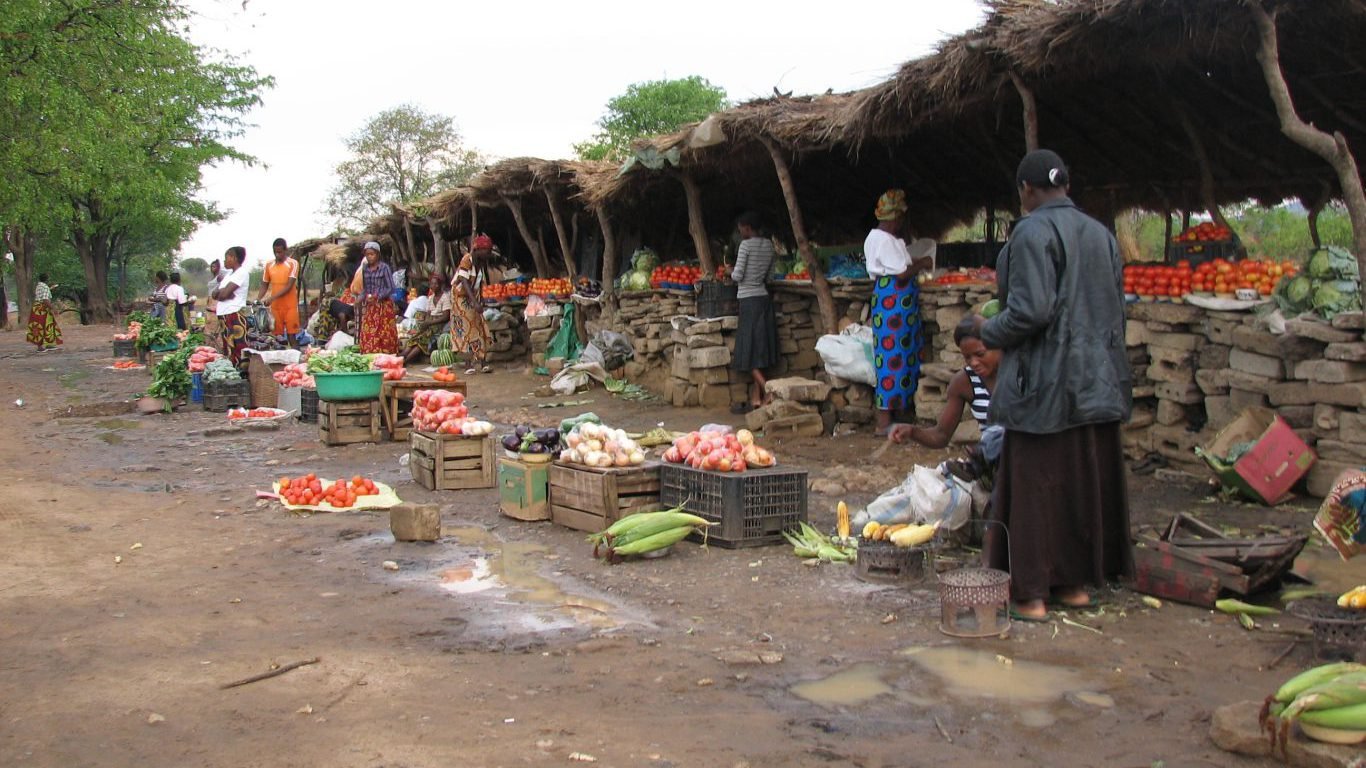
10. Zambia
> Pct. food insecure: 52.4%
> Projected food insecurity share for 2027: 40.2%
> Total population: 16.0 million
The majority of Zambia’s population is food insecure, and the effects of food insecurity are certainly being felt. Some 48.4% of the population is undernourished, the second highest share among low- and middle-income countries considered.
Zambia’s population appears to in particular lack access to some kinds of healthy food. Fruits and vegetables account for just 1.6% of total food consumption, one of the smallest shares in the country. The country’s food insecurity rate is projected to drop more than a dozen percentage points, down to 40.2% in 10 years.
[in-text-ad]
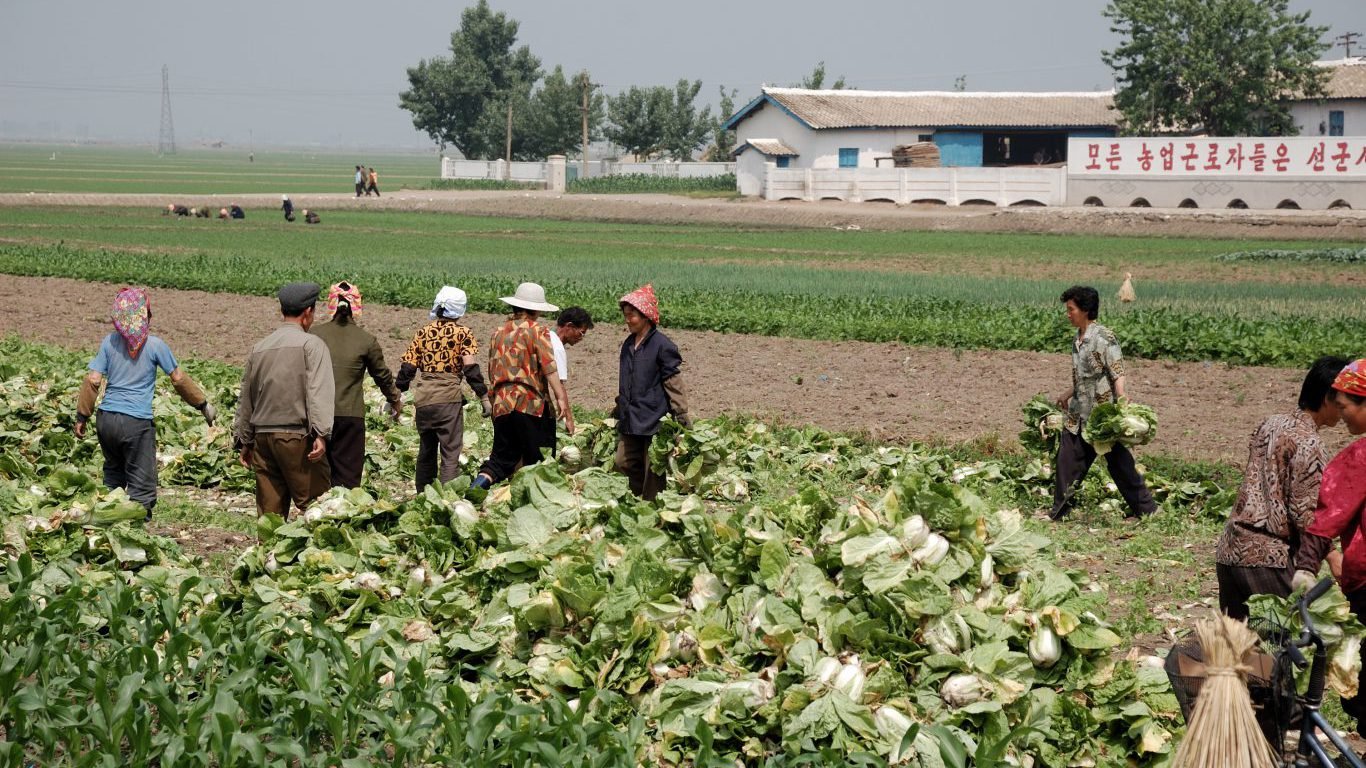
9. North Korea
> Pct. food insecure: 53.8%
> Projected food insecurity share for 2027: 40.9%
> Total population: 25.2 million
North Korea is notoriously secretive, but the USDA estimates that 53.8% of the population does not have access to enough calories each day.
When the USDA published its report in June 2017, it projected the country’s food insecurity rate would drop to 40.9% by 2027. Since then, however, the United Nations has slapped North Korea with several rounds of sanctions for its ongoing nuclear missile tests. Those sanctions could severely hamstring North Korea’s economy and lead to much greater food insecurity within the population.
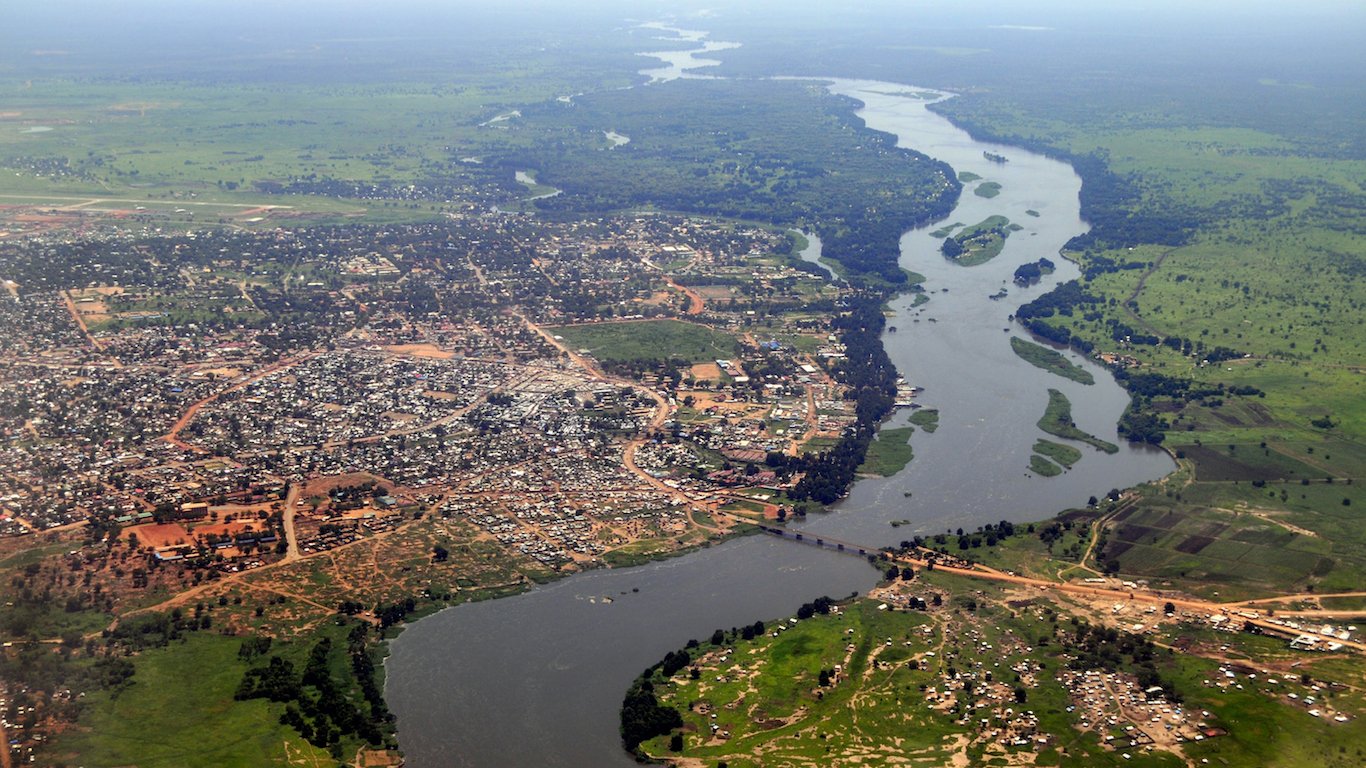
8. Sudan
> Pct. food insecure: 59.0%
> Projected food insecurity share for 2027: 54.8%
> Total population: 37.3 million
Food insecurity is one of many problems facing Sudan. Roughly 1.5 million people died as a result of the conflict that eventually led South Sudan to split from Sudan and become an independent country in 2011. The conflict in the western region of Darfur has killed or displaced over 2 million people. Ongoing conflicts such as these can often leave pervasive hunger in their wake.
The food insecurity rate in Sudan is expected to drop somewhat, from 59.0% to 54.8% over the next decade.
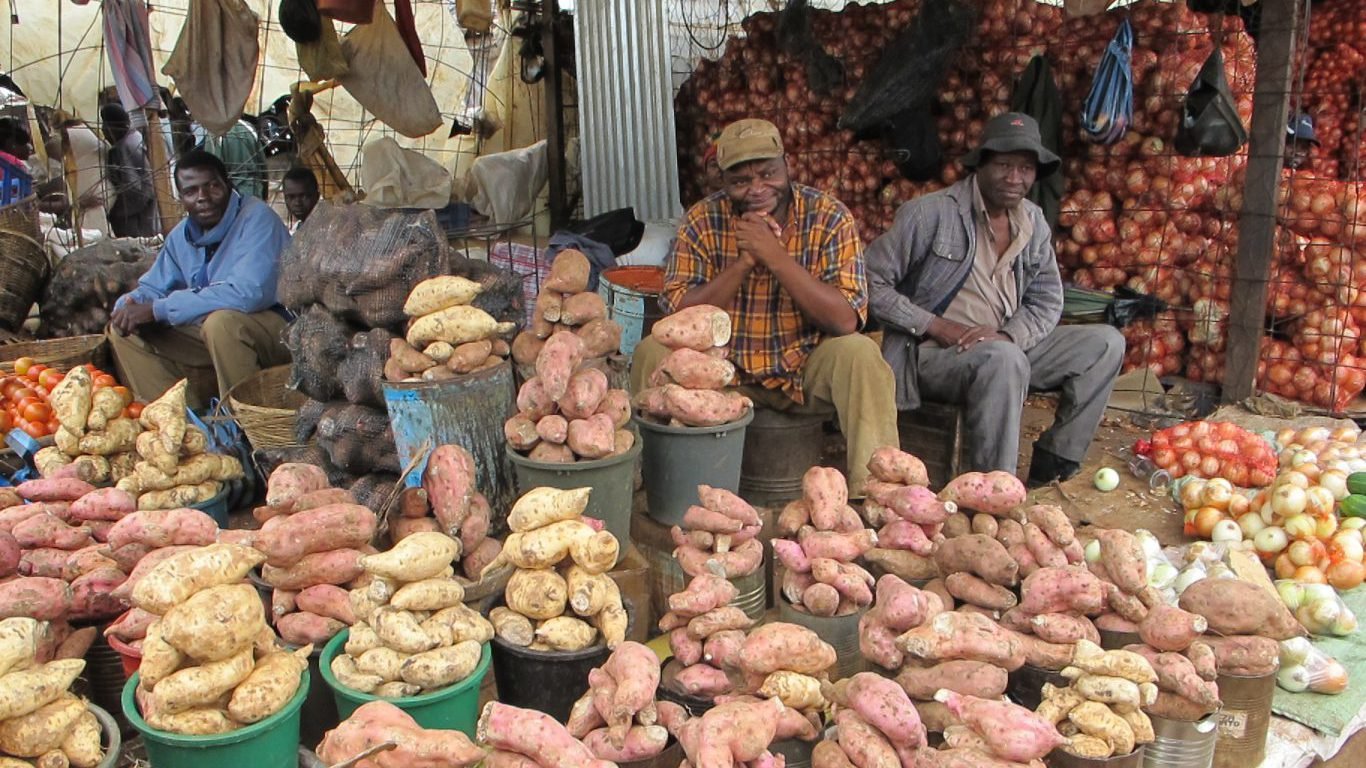
7. Zimbabwe
> Pct. food insecure: 61.2%
> Projected food insecurity share for 2027: 61.3%
> Total population: 14.9 million
Some 61.2% of Zimbabwe’s population struggle with food insecurity. And unlike most countries, the USDA expects Zimbabwe’s food insecurity rate to actually tick up slightly over the next 10 years to 61.3%.
Zimbabwe has also had problems with droughts, making it difficult to grow food. President Robert Mugabe also redistributed many of the country’s farms after taking power, leading to drops in production.
[in-text-ad-2]
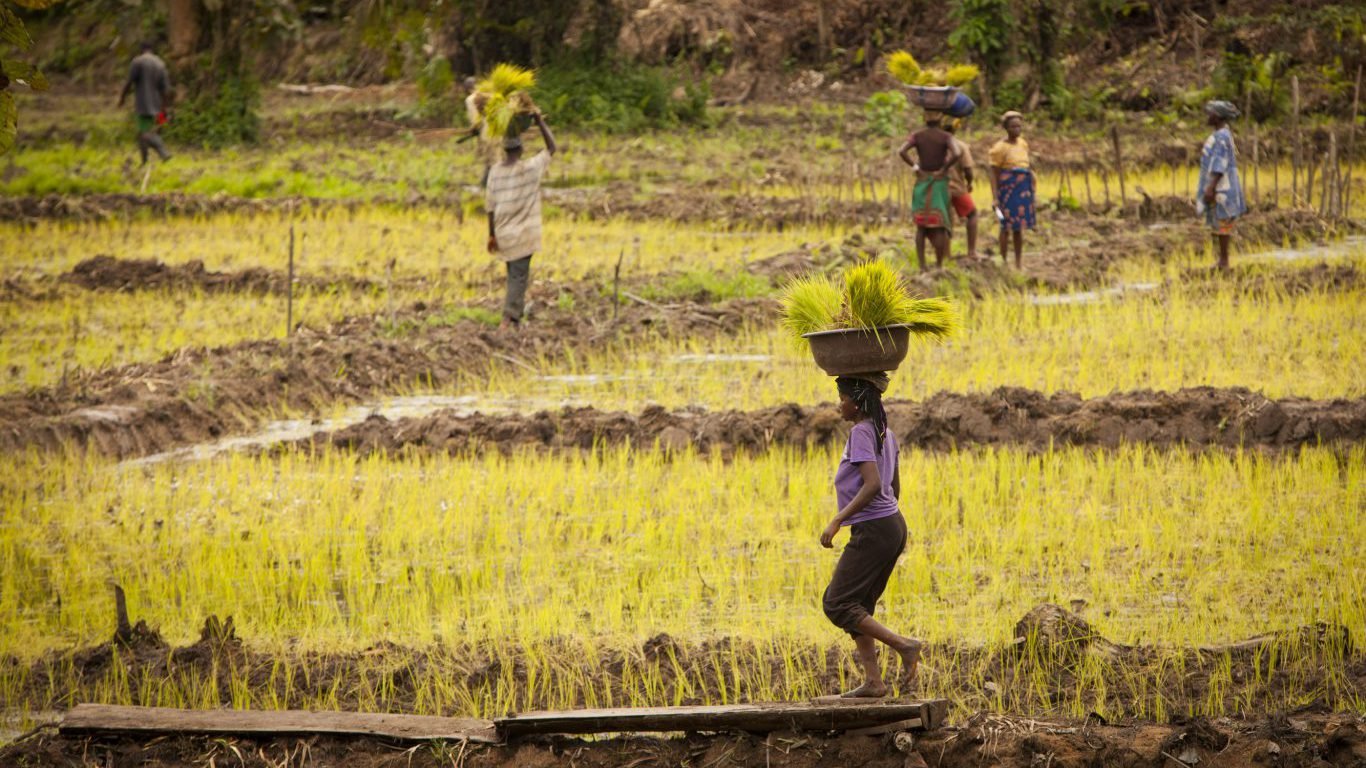
6. Liberia
> Pct. food insecure: 70.6%
> Projected food insecurity share for 2027: 50.5%
> Total population: 4.4 million
Liberia has many challenges in dealing with hunger. More than 70% of its population is food insecure. While the USDA projects an improvement in the country’s food insecurity rate, most Liberians will still be food insecure in 10 years.
The average Liberian misses out on more than a third of the recommended 2,100 calories per day, making for the largest food gap of all 76 ranked countries. The type of food Liberians are missing is important, too. They only get 68% of their recommended amount of protein, the lowest share of any ranked country.

5. Burundi
> Pct. food insecure: 80.0%
> Projected food insecurity share for 2027: 75.7%
> Total population: 11.5 million
Four out of five people in Burundi do not have access to the recommended amount of food. Though that rate is expected to improve in the next decade, more than 75% of the nation’s population is projected to still be food insecure in 2027.
The country does have one significant factor working in its favor that could help alleviate some food insecurity. Among the 76 countries listed, Burundi has the highest share of its land that’s used for agriculture at 79.2%. The abundant farmland, if utilized well, could better supply the population with food.
[in-text-ad]
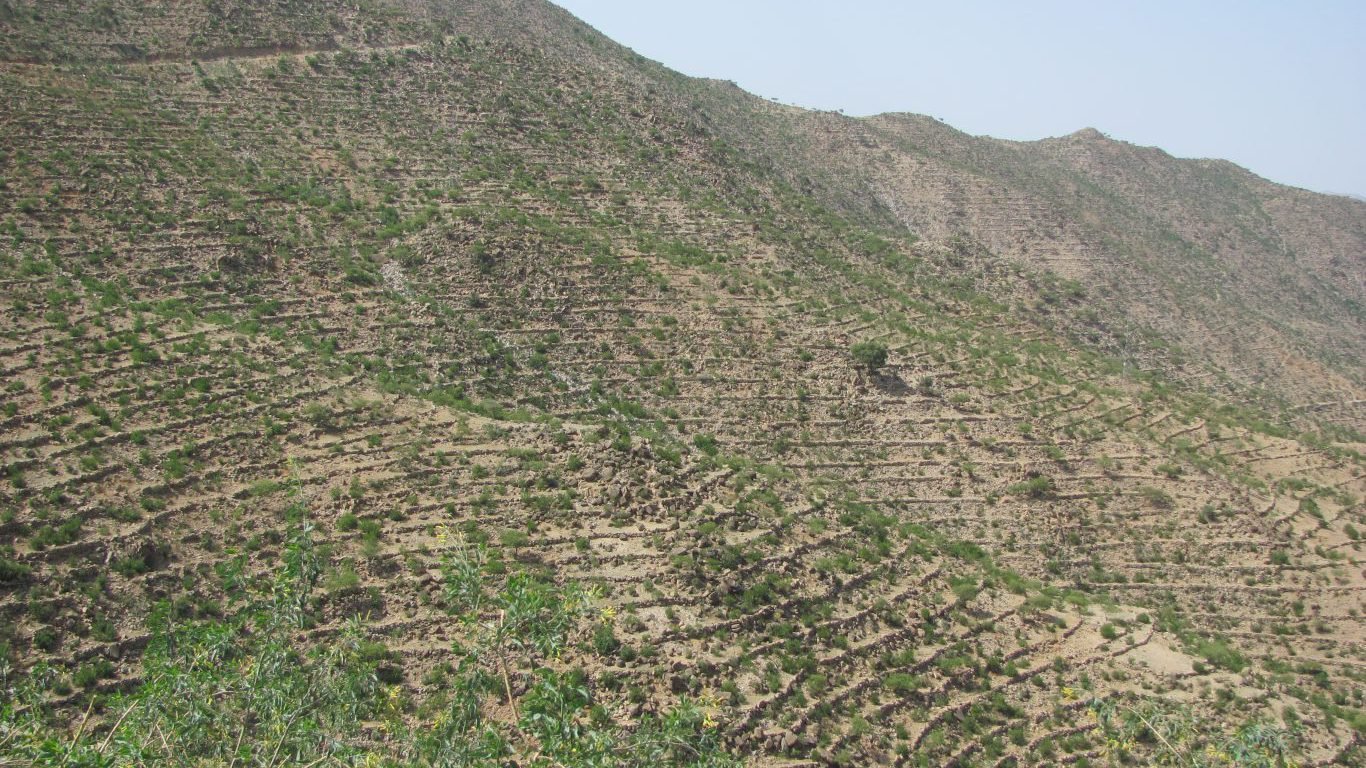
4. Eritrea
> Pct. food insecure: 81%
> Projected food insecurity share for 2027: 76.9%
> Total population: 5.9 million
Eritrea achieved its independence from Ethiopia in 1993 after a bloody civil war. Now, the country is struggling with food insecurity as some 81% of Eritreans do not get enough to eat. On average, residents of Eritrea fall more than 600 calories short of the recommended daily amount of 2,100.
Even though the country’s food insecurity rate is predicted to decrease somewhat, Eritrea is projected to have more total people who are food insecure in 2027 than it does now, largely because of population growth.
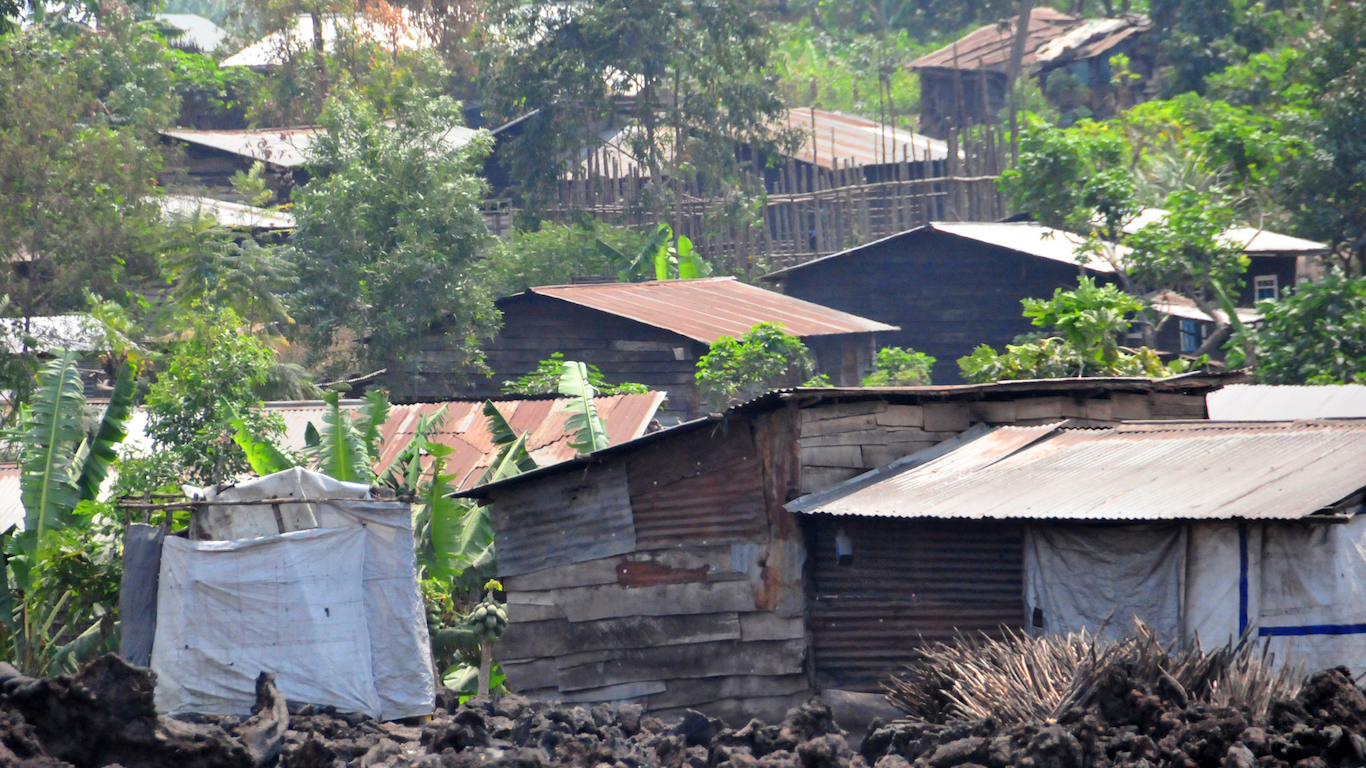
3. DR Congo
> Pct. food insecure: 82.3%
> Projected food insecurity share for 2027: 47.5%
> Total population: 83.3 million
The Democratic Republic of Congo lacks the agriculture infrastructure needed to feed most of its population. Food makes up 26.4% of total imported goods, and the country still has among the worst food insecurity in the world.
Though the DRC is third on the list with 82.3% of its population food insecure, the Sub-Saharan African country should fare much better in 10 years. The USDA projects the DRC’s food insecurity rate will decrease to 47.5% in 10 years, a drop of nearly 35 percentage points — the largest drop of any ranked country.
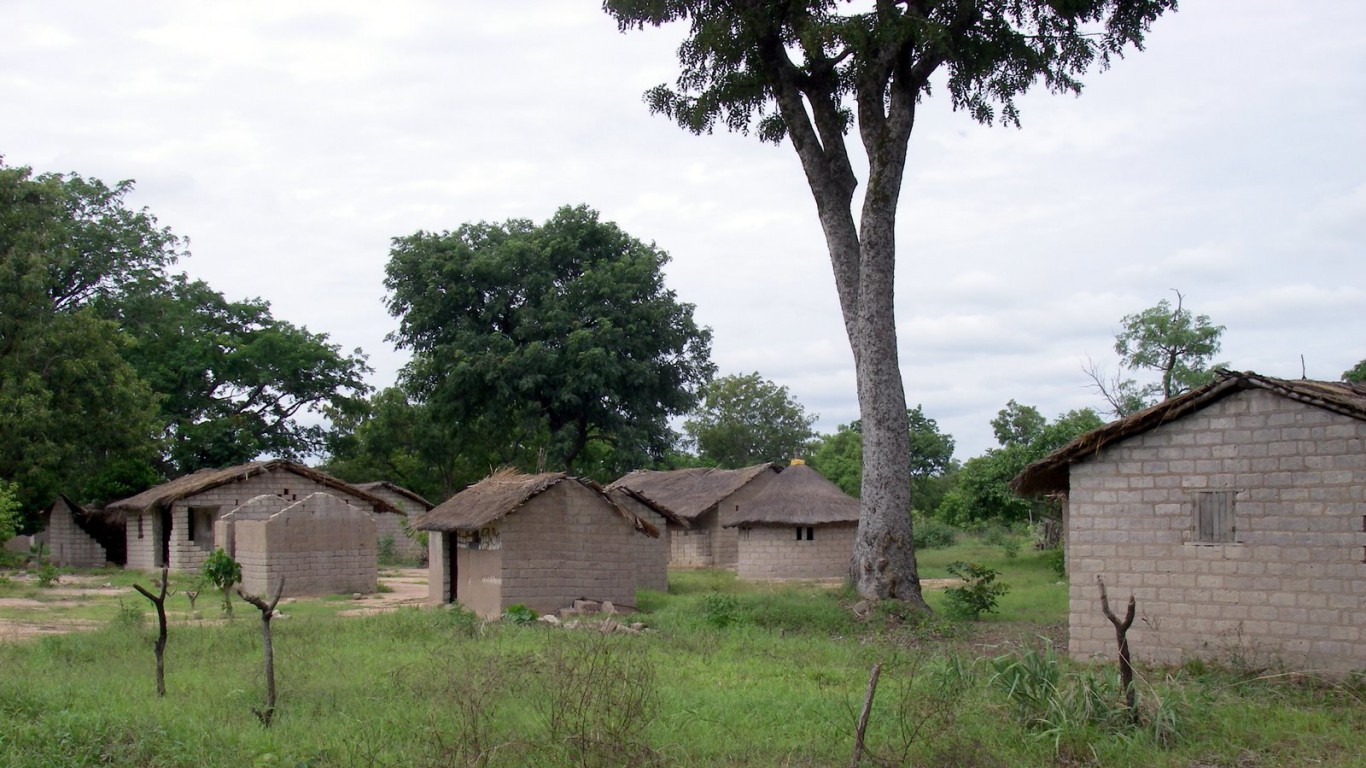
2. Central African Republic
> Pct. food insecure: 82.8%
> Projected food insecurity share for 2027: 75.6%
> Total population: 5.6 million
Even though the Central African Republic is resource-rich, its population struggles with food insecurity more than almost all other countries. Recent religious violence and authoritarian leaders have led to strife in the country and some 82.8% of the population struggling to get enough to eat.
The CAR has the third highest prevalence of undernourishment, with 44.5% of its population classified as undernourished. The country also spends under $25 on healthcare per capita.
[in-text-ad-2]
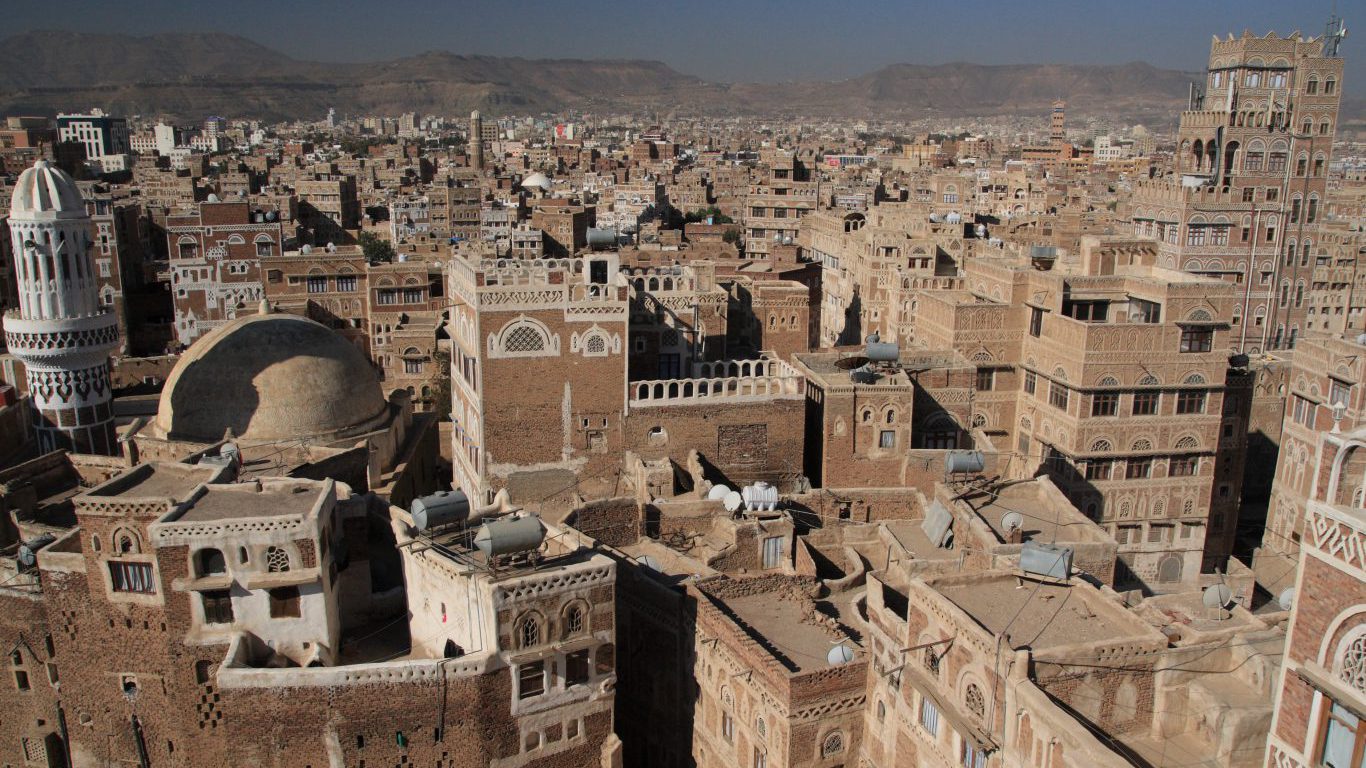
1. Yemen
> Pct. food insecure: 88.3%
> Projected food insecurity share for 2027: 90.4%
> Total population: 28.0 million
Yemen is in the throes of a bloody civil war with many civilians trapped in the middle. That conflict, combined with a drought, made Yemen the most food insecure country in the world. Some 88.3% of the population do not have access to enough food.
Yemen has the second highest food gap of the ranked countries at 675 calories per day. Unfortunately, it does not appear as if the problem will get better any time soon. The USDA projects more than 90% of people in Yemen will likely be food insecure in the year 2027.
Detailed Findings & Methodology:
Of the four regions the USDA studied, Sub-Saharan Africa has by far the most countries facing major food insecurity.
According to Thome, “In Sub-Saharan Africa, there are several places where high levels of food insecurity have persisted for a really long time and aren’t projected to get a lot better in the future.” Many of these countries are struggling with armed conflict, government instability, and lack of economic diversity, Thome explained.
One of the leading reasons countries have to cope with food insecurity is war. Whether it is a civil war or a conflict with another country, armed conflict can be very disruptive for food distribution. It can prevent farmers from planting and growing crops and stop food that’s ready for consumption from getting to those who need it.
Yemen, the most food insecure country listed, is in the midst of a devastating civil war. Many countries in Sub-Saharan Africa are fighting amongst themselves or have several factions within their borders vying for control.
The USDA projection of improved food security in these areas is mostly based on expectations that food in these areas will continue to get cheaper as income increases. Overall, it is an optimistic projection, but improvements will likely not be equal across all countries.
Some of these countries’ economies rely heavily on oil exports, especially in Africa. But with falling oil prices, there is some concern their economies would falter and they would not be able to meaningfully provide hunger relief, Thome explained.
To determine the countries struggling the most with food insecurity, 24/7 Wall St. reviewed the percentage of the population that lacks access to the recommended 2,100 calories, according to the U.S. Department of Agriculture’s International Food Security Assessment. We also considered a variety of social and economic data from groups like the World Bank and the International Monetary Fund, such as GDP figures, agricultural production, and undernourishment.
Are you ready for retirement? Planning for retirement can be overwhelming, that’s why it could be a good idea to speak to a fiduciary financial advisor about your goals today.
Start by taking this retirement quiz right here from SmartAsset that will match you with up to 3 financial advisors that serve your area and beyond in 5 minutes. Smart Asset is now matching over 50,000 people a month.
Click here now to get started.
Thank you for reading! Have some feedback for us?
Contact the 24/7 Wall St. editorial team.